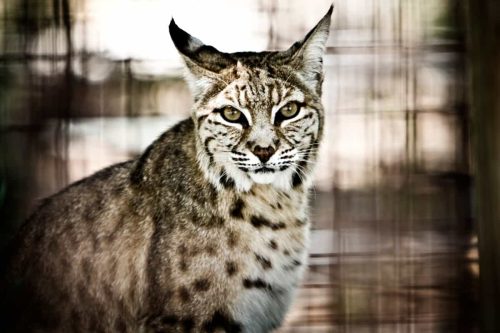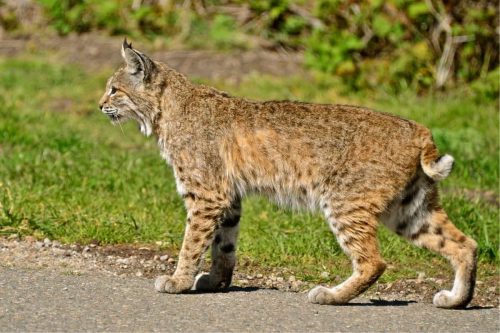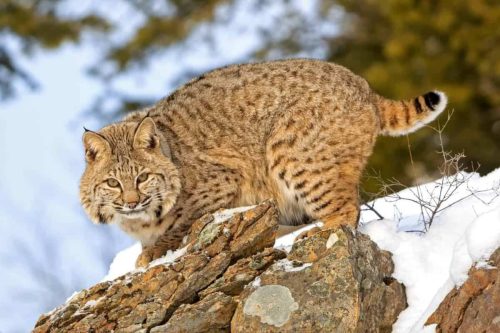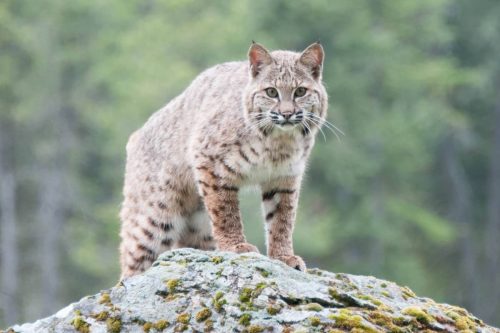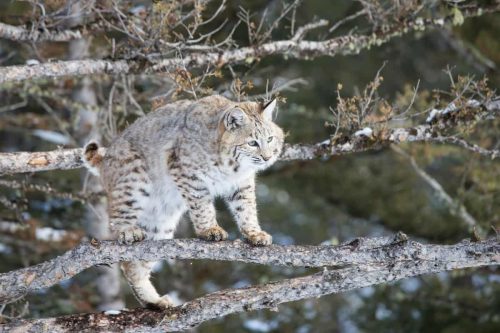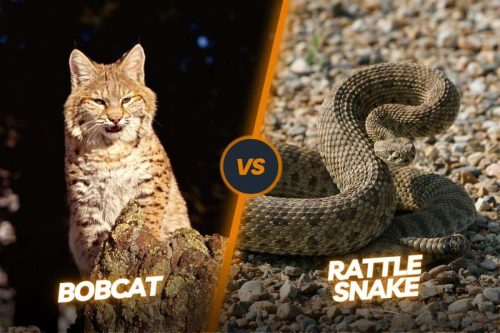Bobcat Teeth: How Strong Is The Bite Of A Bobcat?
Bobcats are carnivore animals and are mainly found in the grasslands, deserts, mountain terrains, forests, and swamps of southern Canada and the overall North American continent. Bobcats rarely stay in the same place for a long period and they always like to move and sense danger with the help of their strong vision and hearing sense.
However, they are very good predators and like to stalk their prey for some distance and then suddenly ambush them. The hunting skill of any animal is closely associated with the teeth. Bobcat teeth also play the main role in this regard. With the help of their big and sharp teeth, they can easily grab small animals like squirrels, rabbits, mice, and raccoons. The main difference between the house cat and the bobcat also comes in terms of their teeth strength and length as well as their overall size.
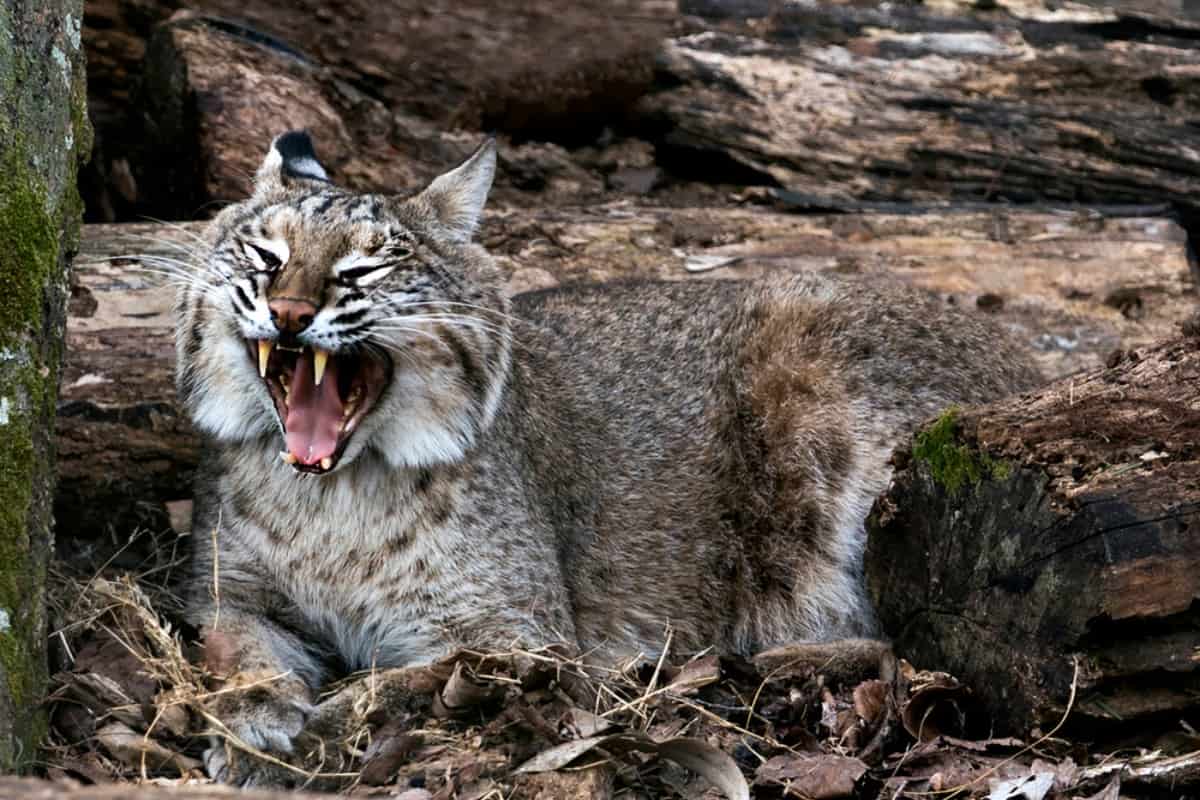
Contents
How many teeth do bobcats have?
The quantity of bobcat teeth varies according to their age. Kitten bobcat teeth and adult bobcat teeth quantity is altogether different. On average, an adult bobcat has 28 teeth unless the quantity has been declined due to any disease or other issues. On the other hand, a baby bobcat doesn’t get any teeth initially and their teeth gradually grow when they become at least 1 month old.
The general dental formula of the bobcat teeth is like 3/3 incisors, 2/2 premolars, 1/1 canines, and 1/1 molars. In this way, the total bobcat teeth add up to 28. These kinds of teeth exist on each side of their jaw. The formulae represent how many teeth the bobcats have in each quadrant.
Do baby bobcats have teeth?

Bobcats are diphyodont same as other dogs and human beings. It means that bobcats come with two kinds of teeth at different stages of their life. At the initial stage, they grow milk or baby teeth. After almost one year, they get their permanent or adult teeth. The milk teeth at the initial stage are actually converted into permanent teeth after some time.
A study was done in 1988 on the teeth of bobcats. It was found that milk teeth began to grow in the bobcat after almost 10-15 days of their birth. After almost 20 weeks, milk teeth started to convert into permanent or adult teeth. Bobcats get their full-fledged permanent teeth in the almost first year of their life.
What kind of teeth do bobcats have?
Being heterodont mammals, bobcats come with various kinds of teeth. You can easily notice molars, premolars, canines, and incisors in their mouth. The distinctive feature of the teeth come in the form of their large size, long length, and extraordinary sharpness. This kind of teeth you can only find in highly dangerous and extremely wild cats.
The teeth of the bobcat have also been designed in such a way that they are equally capable of grabbing and killing small mammals like squirrels, rabbits, and rodents by attacking their neck directly. By applying the powerful force of their teeth, they can easily convert the meat into small bite-sized pieces. These can easily swallow these pieces without even chewing.
How do bobcats utilize their teeth?
Bobcats utilize their teeth for various purposes. Bobcats actually come with a variety of teeth and each of these kinds has its own function in the mouth of a bobcat. For instance, there are four canines in the bobcat mouth which are mainly deployed for hunting other animals. The canine teeth are very strong and sharp and can easily grab the prey from its neck and pierce through its flesh for a striking blow.
Sometimes, Canines also work together with incisors when the bobcats like to tear down the victim’s flesh into small pieces. Moreover, the molars and premolars also work collectively and these teeth are also very sharp and extremely helpful in cutting, grinding, and shearing the food before digesting it at the end. Molars are mainly utilized for the grinding and chewing of meat.
Generally, bobcats like to gulp food without even chewing. Other than teeth, bobcats also come with very sharp claws which are also greatly helpful in killing their prey and also defend themselves from ferocious predators. Indeed, bobcats have razor-sharp claws but these claws are retractable like other Felidae species. The diet of the bobcat is not very heavy as they can easily rely on small animals like rodents, squirrels, rabbits, and mice for their diet. It is almost 90% of their diet.
That’s why they don’t have to struggle a lot with their teeth for killing these animals. All the teeth of bobcats become functional only when have to stalk very big animals like deer, sheep, or goats or if they engage in a fight with other wild animals like cougars, badgers, etc.
How strong is the bite of a bobcat?
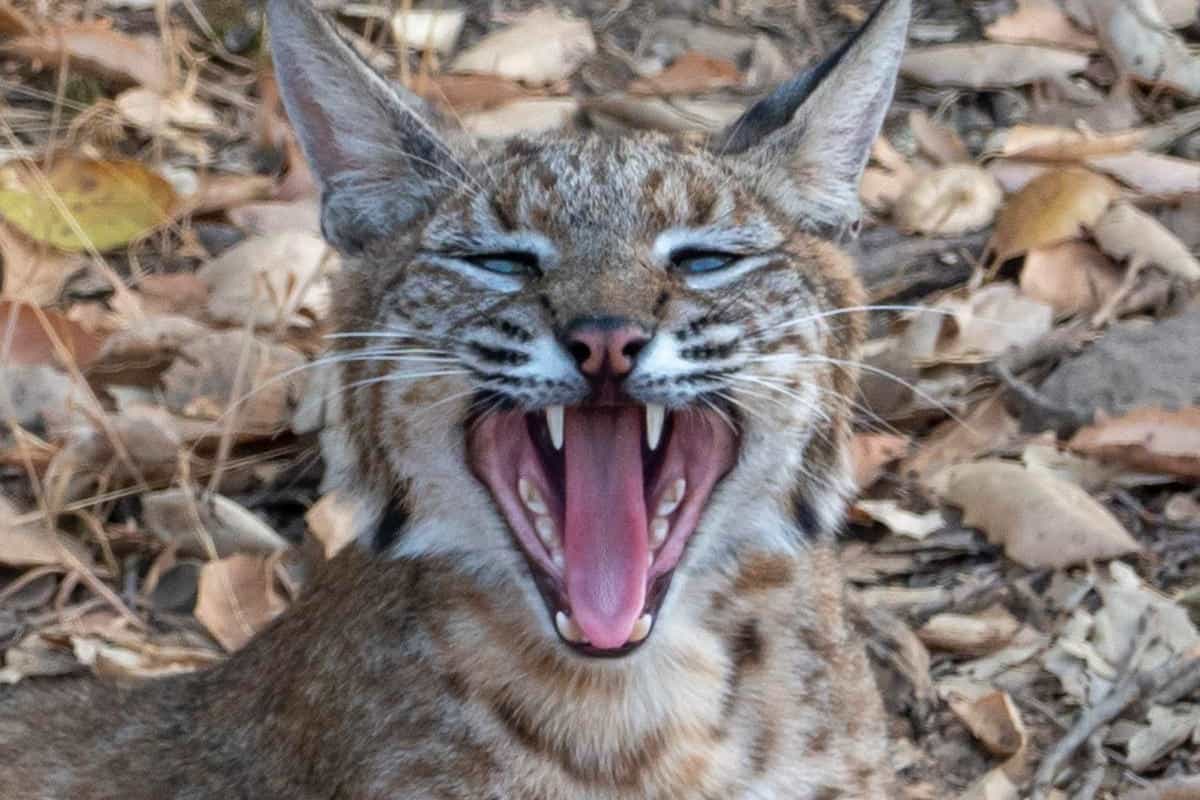
Despite being medium-sized wild cats, bobcats come with a very powerful and strong jaw. They can inflict a very ferocious bite with this jaw. The power of the jaw is extremely helpful in the killing and hunting of prey. You may not believe that the bobcat bite can generate a bite force of almost 548 N which is much more powerful than the other same-size and ferocious animals like foxes, cougars, cheetahs, leopards, and lynxes.
The small size animals could not even come close to this much bite force. The canines of the bobcats are very strong and powerful and can easily tear through the flesh of the prey and ultimately pierce its pieces. By size and face, bobcats look very innocent and sometime you might perceive them as house cats but they are very aggressive and ferocious in the field.
With this bobcat bite force and stealth capability, they can easily take down even very large animals like deer, sheep, and goats. They don’t have to do a lot of struggle for taking down these animals. It normally happens when food is scarce and there is also a shortage of smaller animals like rabbits, mice, rats, etc. it usually happens in the extreme winter season.
Bobcats are not very big size cats. It comes in the medium-sized category. But if they get more than needed diet then they could also reach to their maximum physical strength. At this stage, bobcats weigh around 50-55 pounds which is much larger than the average weight of the bobcats. On daily basis, bobcats need to take 2-3 pounds of flesh for their daily needs.
Frequently asked questions
Conclusion
Bobcats have a variety of teeth. These teeth mainly included canines, molars, and premolars. All of them are very sharp and could easily kill in a few seconds. Due to the extraordinary sharpness of the bobcat teeth, they are also capable of hunting down some large animals like deer, sheep, and goats. Bobcats usually target the most sensitive parts of the animal’s body like the throat, neck, and skull.

Izzy is an experienced ranch worker who has a passion for exploring nature and getting up close to wildlife. With her connections to various animal organizations, Izzy is well-versed in animal care and rehabilitation.

